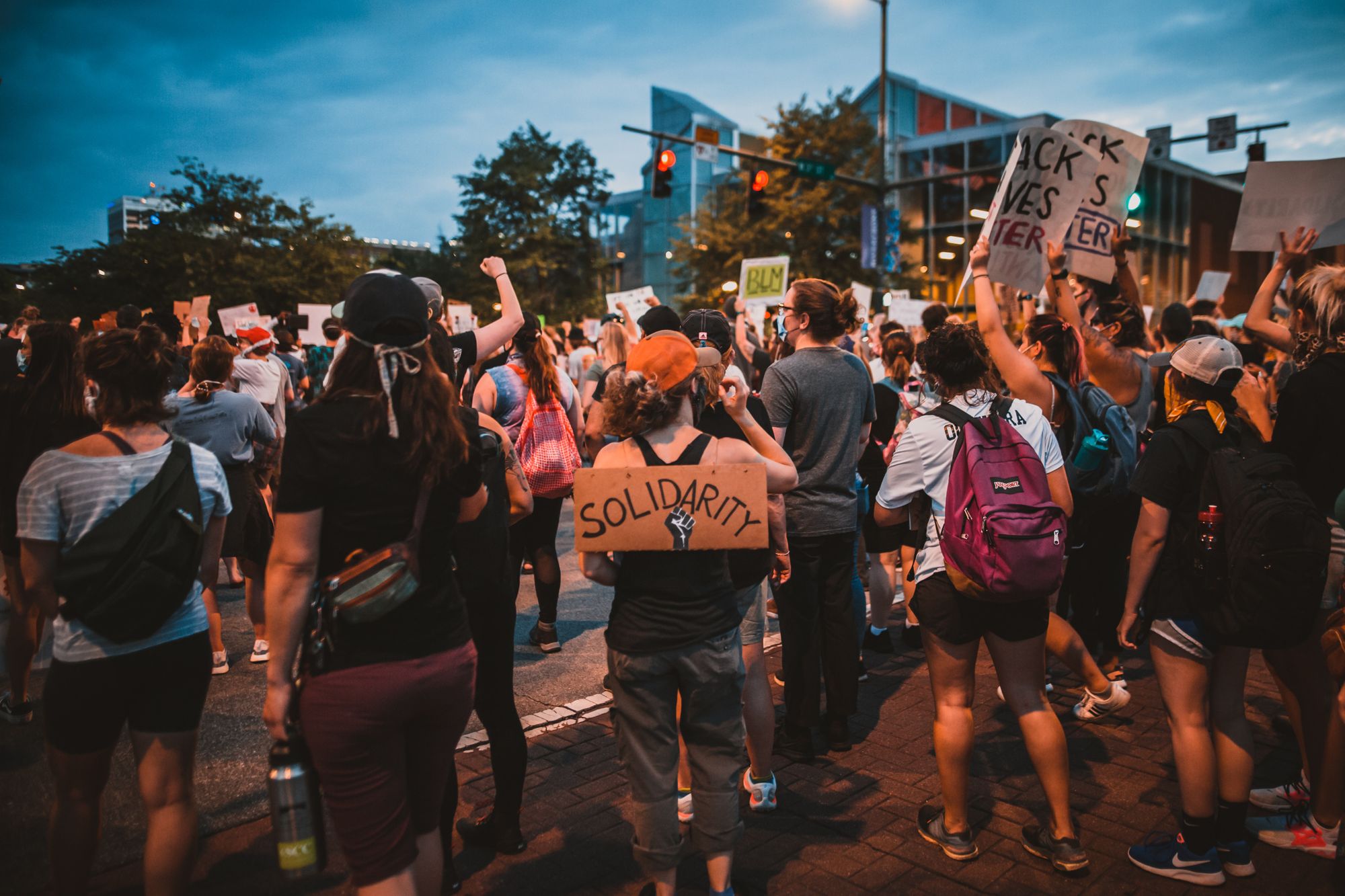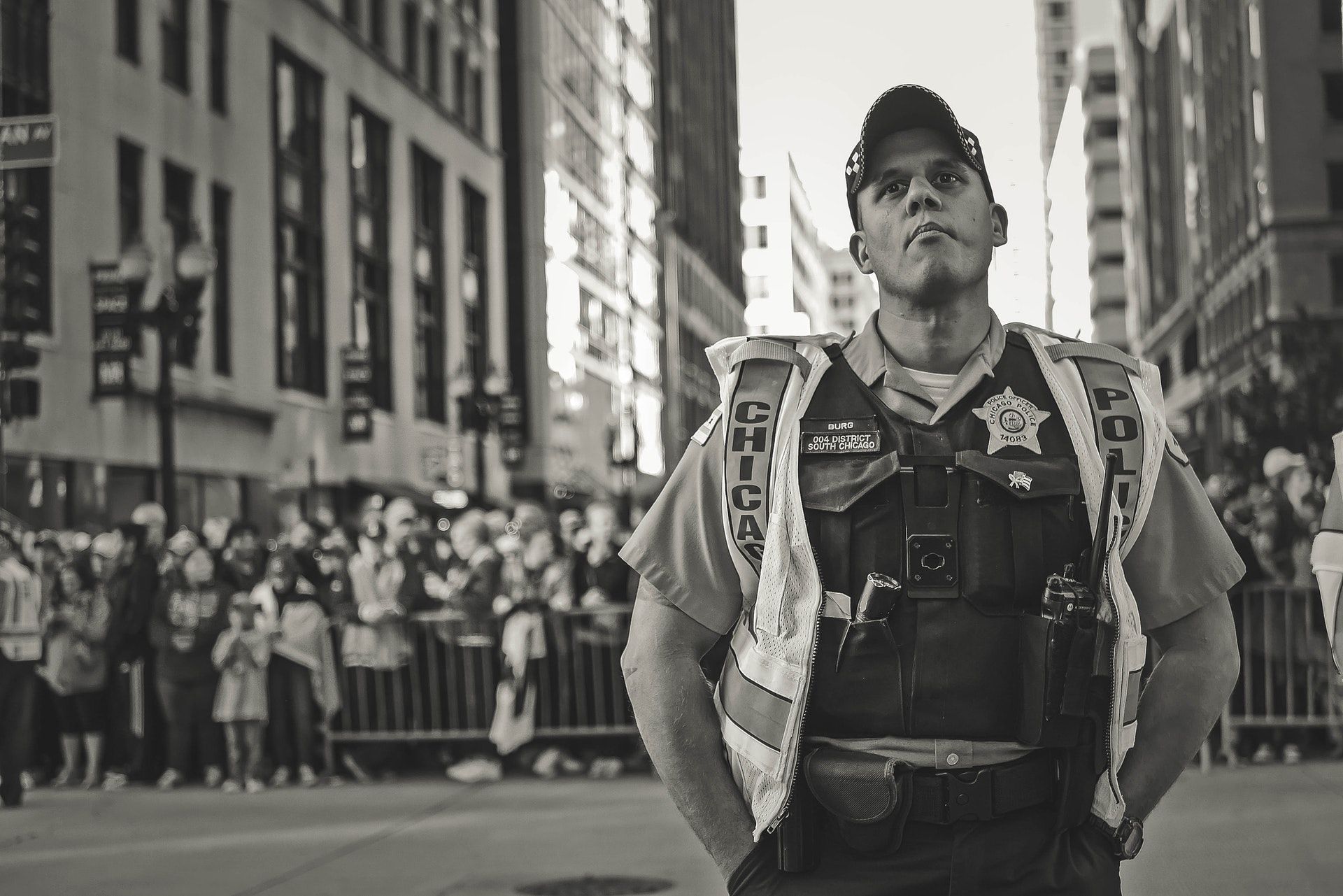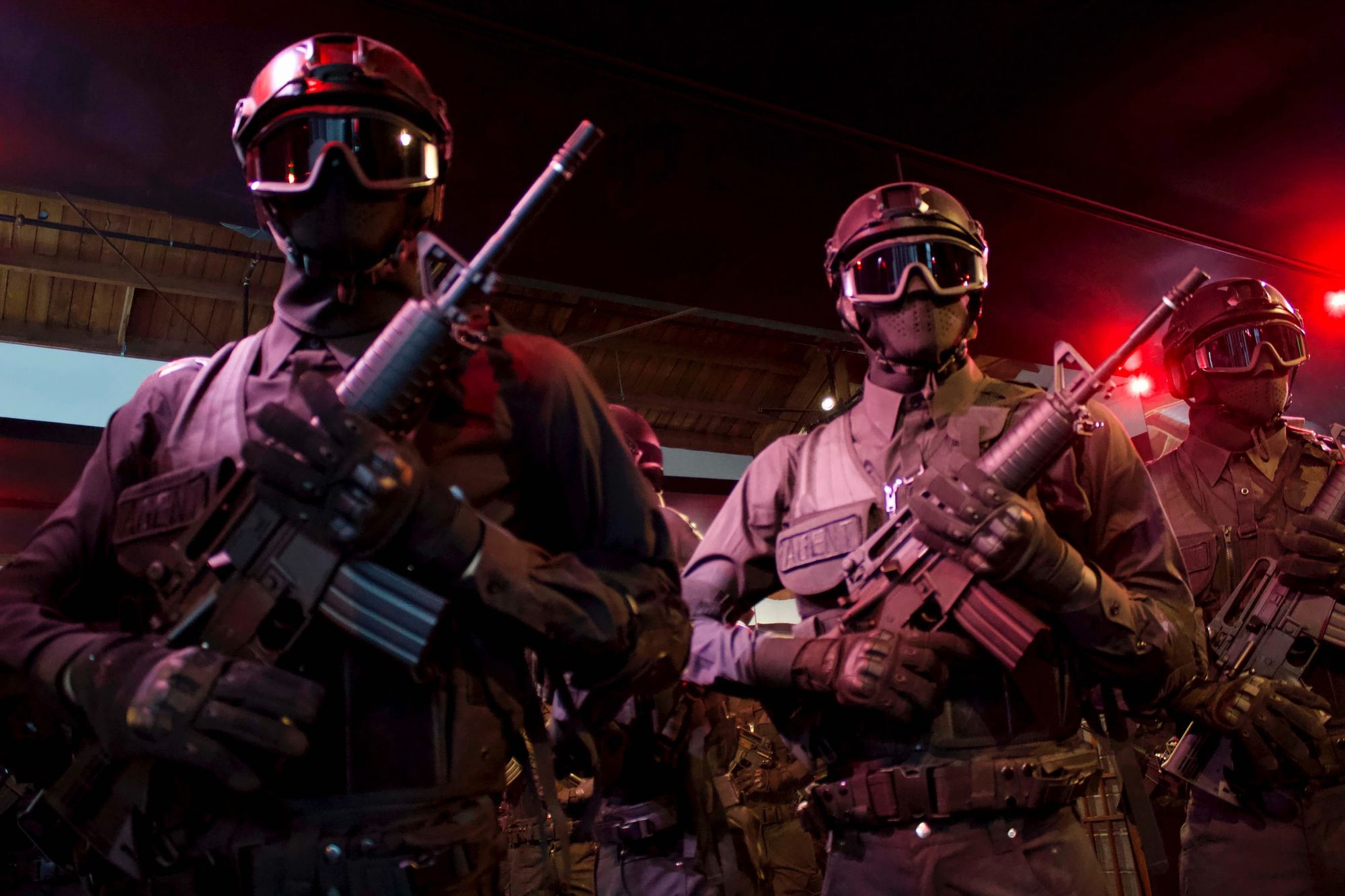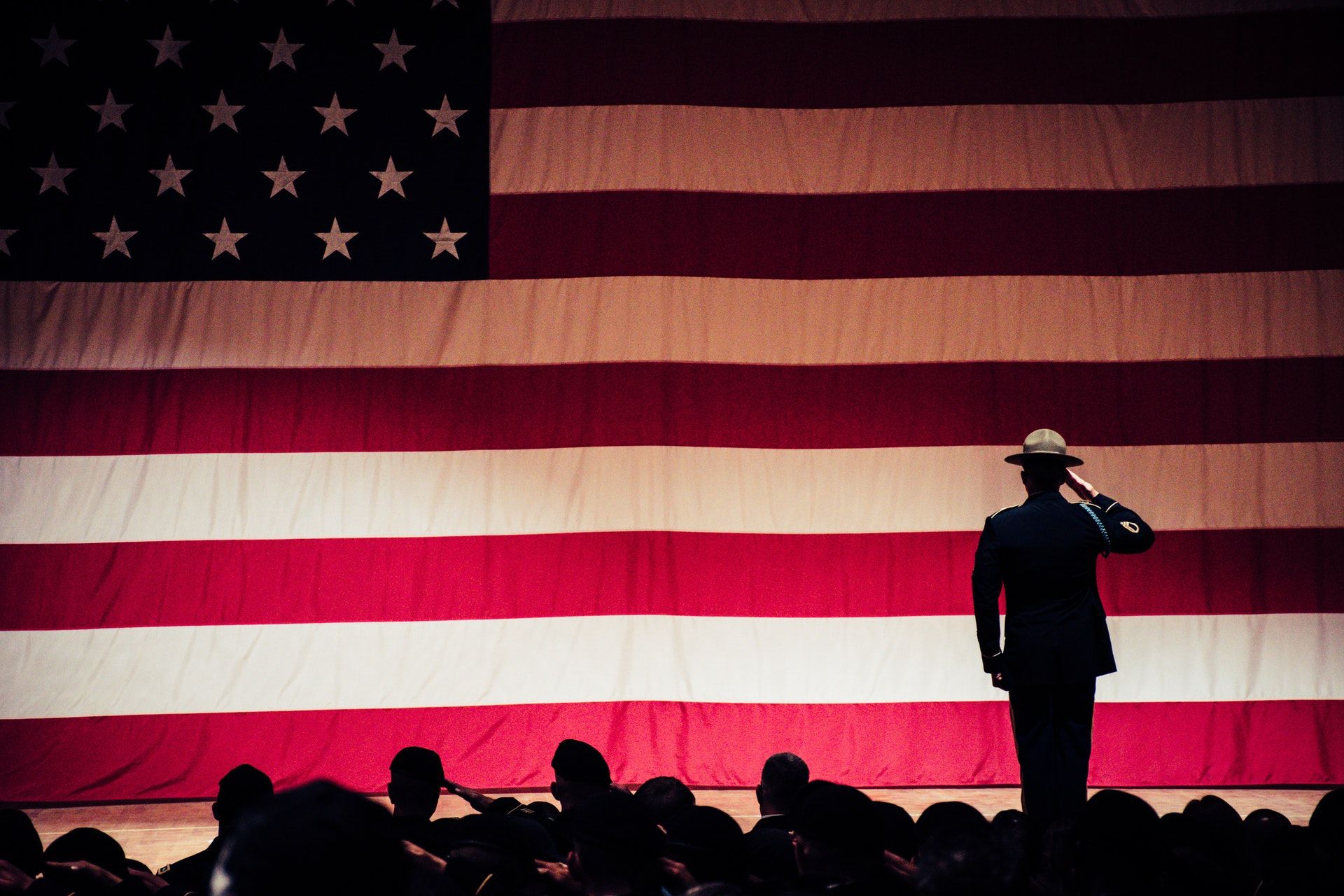For most Americans, Labor Day in September marks a few things: It’s a convenient three-day weekend between Independence Day in July and the later winter holidays. Many use it as a chance for one last summer barbecue or gathering with friends before school starts again. You can likely find local parades that proudly show support of local unions - complete with highschool marching bands, American flags, and local union banners. In between advertisements for Labor Day shopping deals and summer blockbusters, you might even hear news stories that remind us that this day is in honor of “the fight for workers’ rights.”

But over a hundred years ago, Labor Day was very different from what it is today. In this article, we’ll take a close look at Labor Day’s history and see how it’s been stripped of its powerful, pro-worker, pro-democracy origins over 150 years ago.
What a “political” Labor Day looked like
As a German or Bohemian immigrant in Chicago, Ill. in 1886, you could expect to be paid $1.50 for a day’s work. Adjusted for inflation in 2021, this equates to roughly $42 a day or about $4 an hour. Child labor was also generally acceptable - and, in some cases, deemed “necessary” to operate or service the new machines that came along with the Industrial Revolution.

On May 4, 1886, thousands of people gathered at Haymarket Square in Chicago to protest exploitative and inhumane working conditions forced upon workers around the world. America (and the entire industrialized world) in the late 19th century was a cruelly constructed hellscape for working class people. 10 to 12 hour days were the norm and comprised a 6-day work-week with no paid holidays or time off.
This was in the midst of the greatest global economic crisis the world had known to this point - “The Long Depression” - which is largely forgotten today due to being overshadowed by subsequent global economic crises. Just a day prior on May 3rd, police had killed two and wounded many others when they fired into a crowd of striking workers at a McCormick Harvesting Machine Company plant, also in Chicago.
These were not isolated incidents.
The May Day Strike
The massive demonstration that took place on May 4th was part of a long chain of climatic and violent confrontations between workers, fighting for their basic rights as humans, and those intent on denying those rights. Business owners, police, and “private militias” (employed by factory owners) committed themselves to forcing workers to submit to the tortuous status-quo - largely in the name of “economic progress” and unchecked personal greed.

An estimated 300,000 to 500,000 workers nationwide were in the middle of a massive general strike aimed at forcing businesses to comply with demands to limit workdays to 8 hours. This was the culmination of a unanimous decision by the Federation of Organized Trades and Labor Unions earlier in 1884 to choose May 1, 1886 (internationally known as May Day) as the official start of the “8 hour work day.” Today, the world celebrates May 1st as International Workers Day, with the notable exceptions of South Africa, Canada, and the United States.
But the men and women who organized the demonstration in Chicago weren’t just fighting for “workers’ rights” and they weren’t just part of a broad “labor movement.” They were American anarchists, and on that day, thousands answered their calls to march against exploitation and oppression.
When injustice becomes history
While the May 4th demonstration began peacefully, it would end in violence. By 10:30 p.m., about 200 demonstrators remained in the worsening weather (down from an estimated peak of between 600 and 3,000). Though the demonstration was winding down, police captain William Ward became incensed by the radical political speech of the final speaker and ordered the rally to peaceably disperse.

Samuel Fielden, who had been speaking, responded, "Why Captain, this is a peaceable meeting," but quickly relented. As Fielden stepped down from the wagon, someone threw an explosive bomb into the police formation, killing officer Mathias Degan (the only confirmed death from the bomb itself) and wounding several more. In response, the police "swept both sidewalks with a hot and telling fire."
An anonymous police account featured in the June 27th, 1886 edition of The Chicago Tribune recalled that “A very large number of the police were wounded by each other’s revolvers. It was every man for himself, [the officers]… emptied their revolvers, mainly into each other.” While it’s impossible to know exactly what happened that night, what is clear is that after roughly 5 minutes, at least 13 people lay dead and upwards of 150 were wounded - workers and police alike.

In the days following, authorities rounded up 8 anarchist activists: August Spies, Samuel Fielden, Adolph Fischer, Albert Parsons, George Engel, Michael Schwab, Oscar Neebe, and Louis Lingg. Only two (Spies and Fischer) were at the rally at the time of the bombing, and only two others (Fischer and Parsons) were at the rally at any time that day. The remaining four (Engel, Schwab, Neebe, and Lingg) were arrested based on circumstantial suspicion.
Evidence was presented at the ensuing trial that linked Lingg to the construction of similar bombs to the one that was thrown, but notably absent from those on trial was authorities’ prime suspect for the actual bomber: Rudolf Schnaubelt. Schnaubelt had been arrested twice in the immediate aftermath, but was released before the extent of his possible involvement was realized. Schnaubelt was charged along with the other eight, but was never arrested or tried.
The identity of whoever actually threw the bomb remains a mystery to this day.
What silence looks like
The case of Illinois vs. August Spies et al. (1886) lasted about 3 weeks between June and August, 1886. A jury, selected by a biased bailiff, heard arguments presided over by a biased judge, and subsequently found all 8 men guilty after hearing evidence that largely focused on the defendants' political speech. The prosecution openly acknowledged that none on trial had actually thrown the bomb. The judge sentenced all but Neebe (who received a prison sentence of 15 years) to execution by hanging.

Before the executions could take place and in response to the outcry at such a gross miscarriage of justice, Schwab and Fielden’s sentences were commuted to life in prison. The night before the executions, Louis Lingg fatally wounded himself with a smuggled blasting cap that he detonated in his mouth. He died 6 hours later. Ultimately Schawb, Fielden, and Neebe were pardoned by Illinois governor John Altgeld as victims of "hysteria, packed juries, and a biased judge."
The remaining convicted men, August Spies, Adolph Fischer, George Engel, and Albert Parsons were hanged in public on November 11, 1887. With nooses in place and hoods over their faces, each of the men struggled to be heard one last time.
Spies cried out: “the time will come when our silence will be more powerful than the voices you strangle today."
Engel exclaimed, "Long live anarchy!"
Fischer declared: "This is the happiest day of my life!"
Albert Parsons began to speak, "Harken to the voice of the people…” but was cut off by the release of the gallows trap door.
Witnesses reported that all four survived the initial drop and suffocated to death in front of the gathered crowd.
Acting on lessons from the past
The aftermath of the trial is as at least as complicated as the events that lead up to them, but there are a few key points worth noting as we trace these events from 150 years ago to our reality today.

In 1894, President Grover Clevelend (a conservative Democrat) presided over legislation that established a Federal holiday recognizing “Labor Day.” This bill was rushed through to address national tension between workers and authorities that had continued to build after the events of Haymarket and similar tragedies that played out across the nation.
However, in an attempt to appease opposing political interests, Pres. Cleveland chose the first Monday in September to distance the holiday from it’s radical “political” roots and specifically the events of Haymarket - despite the bill only detailing it a holiday for Federal employees. Insultingly, some workers didn’t get “their day” off until the 1930s, and even then only after striking for it.
You might be asking yourself, “but when did we win the fight for the 8-hour workday?” The unfortunately realistic answer is: we haven’t yet. There is no comprehensive protection for an 8-hour work-day enshrined in U.S. law. Individual industries (like railroad workers and miners) have won such protections through their unions, but as the nature of production and industry shifts in America, fewer and fewer Americans are protected by those unions.

As it turns out, May Day is actually an official holiday in the US.
Unique to America, May 1st is “Loyalty Day” - and has been since it was introduced as “Americanization Day” during the “First Red Scare” of 1921, and later formally recognized as “Loyalty Day” by Pres. Dwight D. Eisenhower in 1955 during the “Second Red Scare”. While not celebrated loudly, it is still customary for presidents (Republican and Democrat alike) to issue proclamations on May 1st in praise of loyalty to the United States.
If you've found this compelling, we encourage you to speak to your friends, co-workers, and family about what May 1st means to you. Try making space in your life for democratic, anti-hierarchical processes like collaborative decision-making, worker-coops, and collective bargaining. And never forget: Labor Day is for workers, no matter what the calendar says.



